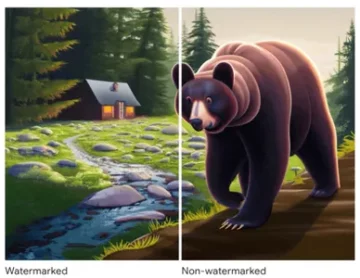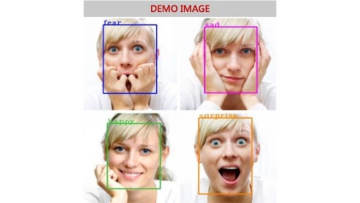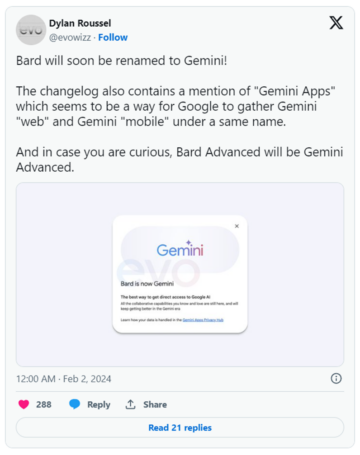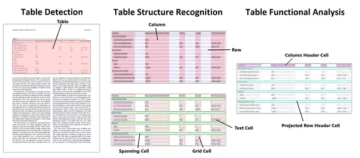Introduction
As the field of artificial intelligence (AI) continues to grow and evolve, it becomes increasingly important for aspiring AI developers to stay updated with the latest research and advancements. One of the best ways to do this is by reading AI Papers for GenAI developers, which provide valuable insights into cutting-edge techniques and algorithms. This article will explore 15 essential AI papers for GenAI developers. These papers cover various topics, from natural language processing to computer vision. They will enhance your understanding of AI and boost your chances of landing your first job in this exciting field.
Importance of AI Papers for GenAI Developers
AI Papers for GenAI developers allow researchers and experts to share their findings, methodologies, and breakthroughs with the wider community. By reading these papers, you gain access to the latest advancements in AI, allowing you to stay ahead of the curve and make informed decisions in your work. Moreover, AI Papers for GenAI developers often provide detailed explanations of algorithms and techniques, giving you a deeper understanding of how they work and how they can be applied to real-world problems.
Reading AI Papers for GenAI developers offers several benefits for aspiring AI developers. Firstly, it helps you stay updated with the latest research and trends in the field. This knowledge is crucial when applying for AI-related jobs, as employers often look for candidates familiar with the most recent advancements. Additionally, reading AI papers allows you to expand your knowledge and gain a deeper understanding of AI concepts and methodologies. This knowledge can be applied to your projects and research, making you a more competent and skilled AI developer.

Table of contents
An Overview: Essential AI Papers for GenAI Developers with Links
Paper 1: Transformers: Attention is All You Need
Link: Read Here
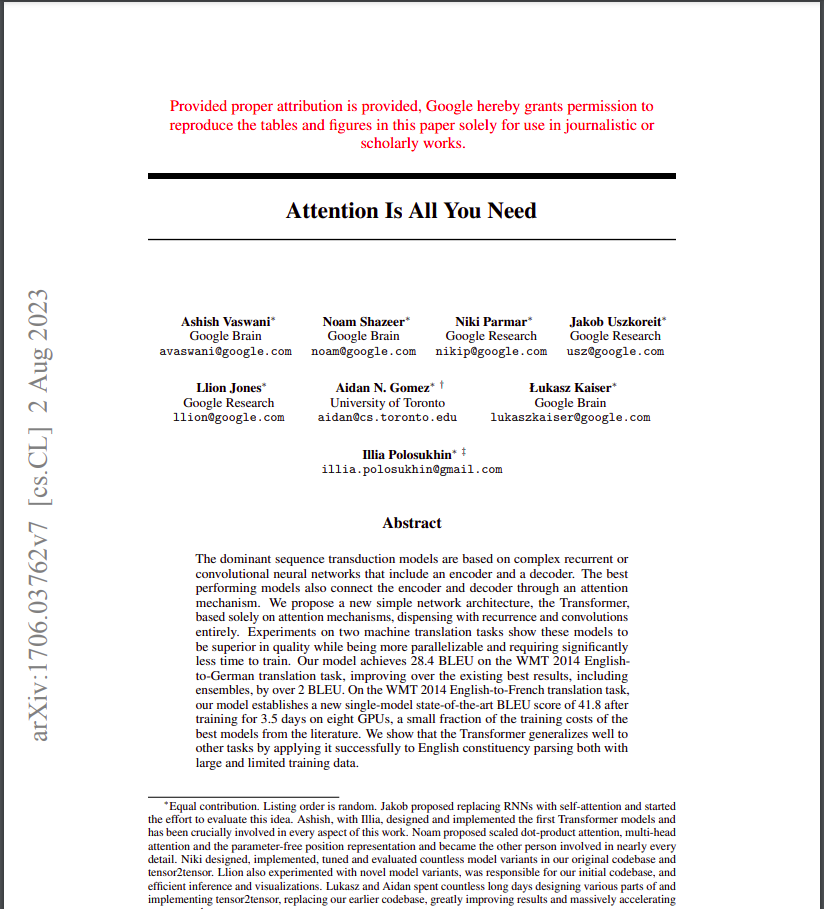
Paper Summary
The paper introduces the Transformer, a novel neural network architecture for sequence transduction tasks, such as machine translation. Unlike traditional models based on recurrent or convolutional neural networks, the Transformer relies solely on attention mechanisms, eliminating the need for recurrence and convolutions. The authors argue that this architecture offers superior performance in terms of translation quality, increased parallelizability, and reduced training time.
Key Insights of AI Papers for GenAI Developers
- Attention Mechanism
The Transformer is built entirely on attention mechanisms, allowing it to capture global dependencies between input and output sequences. This approach enables the model to consider relationships without being limited by the distance between elements in the sequences.
- Parallelization
One major advantage of the Transformer architecture is its increased parallelizability. Traditional recurrent models suffer from sequential computation, making parallelization challenging. The Transformer’s design allows for more efficient parallel processing during training, reducing training times.
- Superior Quality and Efficiency
The paper presents experimental results on machine translation tasks, demonstrating that the Transformer achieves superior translation quality compared to existing models. It outperforms previous state-of-the-art results, including ensemble models, by a significant margin. Additionally, the Transformer accomplishes these results with considerably less training time.
- Translation Performance
On the WMT 2014 English-to-German translation task, the proposed model achieves a BLEU score of 28.4, surpassing existing best results by over 2 BLEU. On the English-to-French task, the model establishes a new single-model state-of-the-art BLEU score of 41.8 after training for only 3.5 days on eight GPUs.
- Generalization to Other TasksThe authors demonstrate that the Transformer architecture generalizes well to tasks beyond machine translation. They successfully apply the model to English constituency parsing, showing its adaptability to different sequence transduction problems.
Paper 2: BERT: Pre-training of Deep Bidirectional Transformers for Language Understanding
Link: Read Here
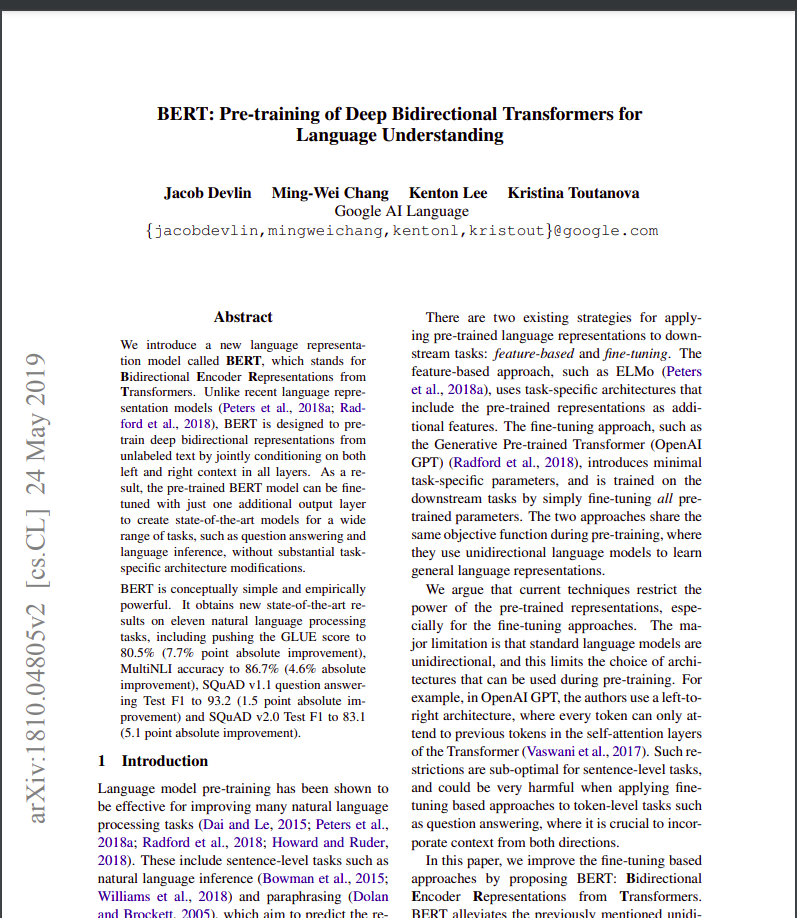
Paper Summary
Language model pre-training has proven effective for improving various natural language processing tasks. The paper distinguishes between feature-based and fine-tuning approaches for applying pre-trained language representations. BERT is introduced to address limitations in fine-tuning approaches, particularly the unidirectionality constraint of standard language models. The paper proposes a “Masked Language Model” (MLM) pre-training objective, inspired by the Cloze task, to enable bidirectional representations. A “next sentence prediction” task is also used to jointly pretrain text-pair representations.
Key Insights of AI Papers for GenAI Developers
- Bidirectional Pre-training Importance
The paper emphasizes the significance of bidirectional pre-training for language representations. Unlike previous models, BERT utilizes masked language models to enable deep bidirectional representations, surpassing unidirectional language models used by prior works.
- Reduction in Task-Specific Architectures
BERT demonstrates that pre-trained representations reduce the need for heavily-engineered task-specific architectures. It becomes the first fine-tuning-based representation model achieving state-of-the-art performance across a diverse range of sentence-level and token-level tasks, outperforming task-specific architectures.
- State-of-the-Art Advancements
BERT achieves new state-of-the-art results on eleven natural language processing tasks, showcasing its versatility. Notable improvements include a substantial increase in the GLUE score, MultiNLI accuracy, and enhancements in SQuAD v1.1 and v2.0 question-answering tasks.
You can also read: Fine-Tuning BERT with Masked Language Modeling
Paper 3: GPT: Language Models are Few-Shot Learners
Link: Read Here
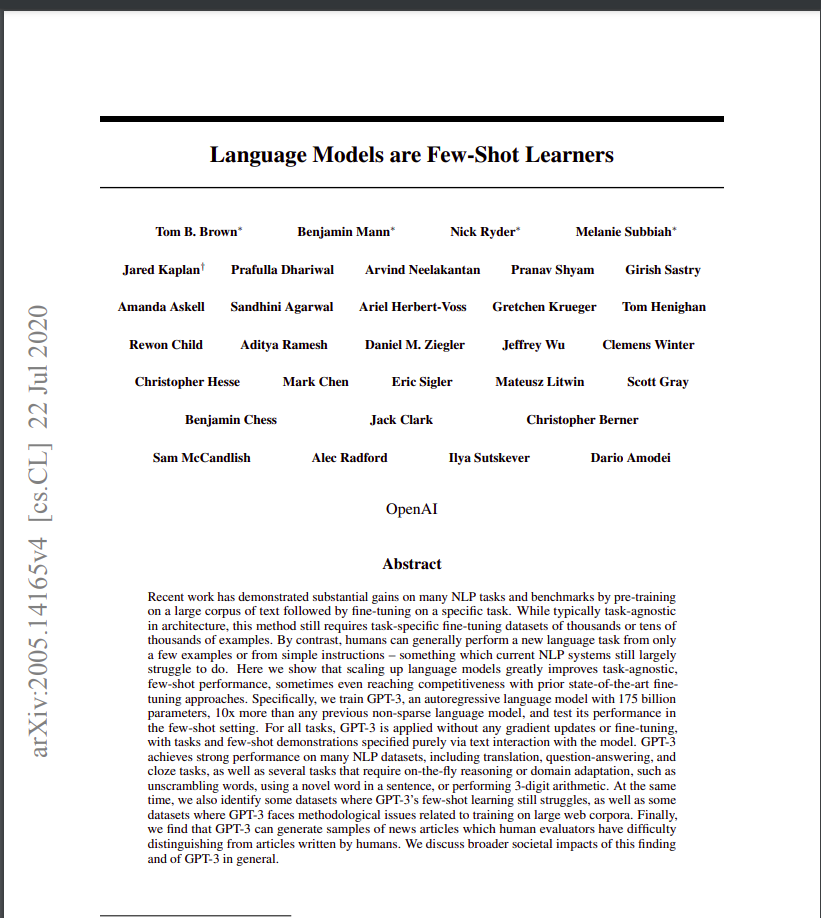
Paper Summary
The paper discusses the improvements achieved in natural language processing (NLP) tasks by scaling up language models, focusing on GPT-3 (Generative Pre-trained Transformer 3), an autoregressive language model with 175 billion parameters. The authors highlight that while recent NLP models demonstrate substantial gains through pre-training and fine-tuning, they often require task-specific datasets with thousands of examples for fine-tuning. In contrast, humans can perform new language tasks with few examples or simple instructions.
Key Insights of AI Papers for GenAI Developers
- Scaling Up Improves Few-Shot Performance
The authors demonstrate that scaling up language models significantly enhances task-agnostic, few-shot performance. GPT-3, with its large parameter size, sometimes achieves competitiveness with state-of-the-art fine-tuning approaches without task-specific fine-tuning or gradient updates.
- Broad Applicability
GPT-3 exhibits strong performance across various NLP tasks, including translation, question-answering, cloze tasks, and tasks requiring on-the-fly reasoning or domain adaptation. - Challenges and Limitations
While GPT-3 shows remarkable few-shot learning capabilities, the authors identify datasets where it struggles and highlight methodological issues related to training on large web corpora. - Human-like Article Generation
GPT-3 can generate news articles that human evaluators find difficult to distinguish from articles written by humans. - Societal Impacts and Broader Considerations
The paper discusses the broader societal impacts of GPT-3’s capabilities, particularly in generating human-like text. The implications of its performance in various tasks are considered in terms of practical applications and potential challenges. - Limitations of Current NLP Approaches
The authors highlight the limitations of current NLP approaches, particularly their reliance on task-specific fine-tuning datasets, which pose challenges such as the requirement for large labelled datasets and the risk of overfitting to narrow task distributions. Additionally, concerns arise regarding the generalization ability of these models outside the confines of their training distribution.
Paper 4: CNNs: ImageNet Classification with Deep Convolutional Neural Networks
Link: Read Here
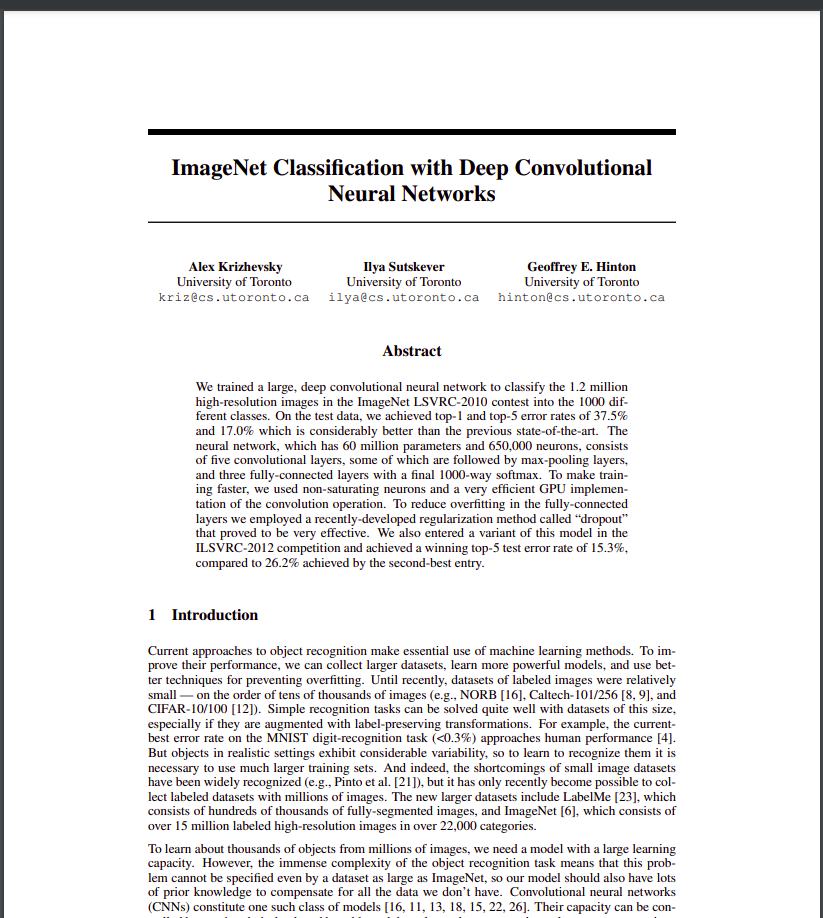
Paper Summary
The paper describes developing and training a large, deep convolutional neural network (CNN) for image classification on the ImageNet Large Scale Visual Recognition Challenge (ILSVRC) datasets. The model achieves significant improvements in classification accuracy compared to previous state-of-the-art methods.
Key Insights of AI Papers for GenAI Developers
- Model Architecture
The neural network used in the study is a deep CNN with 60 million parameters and 650,000 neurons. It consists of five convolutional layers, some followed by max-pooling layers, and three fully-connected layers with a final 1000-way softmax for classification.
- Training Data
The model is trained on a substantial dataset of 1.2 million high-resolution images from the ImageNet ILSVRC-2010 contest. The training process involves classifying images into 1000 different classes.
- Performance
The model achieves top-1 and top-5 error rates of 37.5% and 17.0% on the test data, respectively. These error rates are considerably better than the previous state-of-the-art, indicating the effectiveness of the proposed approach.
- Improvements in Overfitting
The paper introduces several techniques to address overfitting issues, including non-saturating neurons, efficient GPU implementation for faster training, and a regularization method called “dropout” in fully connected layers. - Computational Efficiency
Despite the computational demands of training large CNNs, the paper notes that current GPUs and optimized implementations make it feasible to train such models on high-resolution images.
- Contributions
The paper highlights the study’s contributions, including training one of the largest convolutional neural networks on ImageNet datasets and achieving state-of-the-art results in ILSVRC competitions.
You can also read: A Comprehensive Tutorial to learn Convolutional Neural Networks
Paper 5: GATs: Graph Attention Networks
Link: Read Here
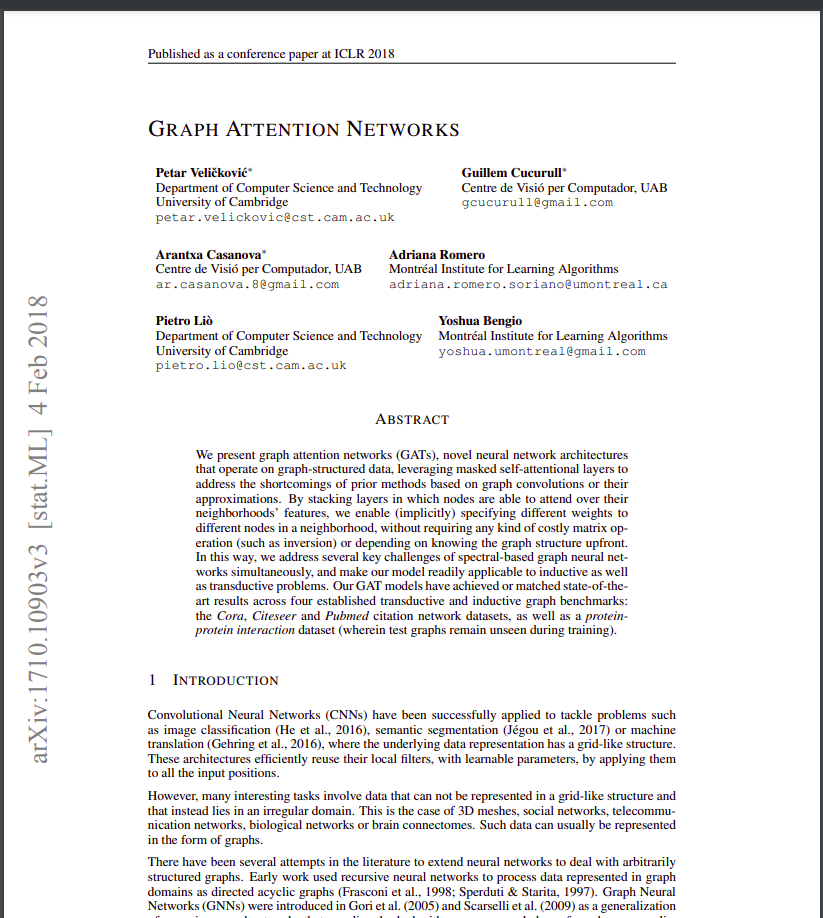
Paper Summary
The paper introduces an attention-based architecture for node classification in graph-structured data, showcasing its efficiency, versatility, and competitive performance across various benchmarks. The incorporation of attention mechanisms proves to be a powerful tool for handling arbitrarily structured graphs.
Key Insights of AI Papers for GenAI Developers
- Graph Attention Networks (GATs)GATs leverage masked self-attentional layers to address limitations in previous methods based on graph convolutions. The architecture allows nodes to attend over their neighbourhoods’ features, implicitly specifying different weights to different nodes without relying on costly matrix operations or a priori knowledge of the graph structure.
- Addressing Spectral-Based Challenges
GATs simultaneously address several challenges in spectral-based graph neural networks. Graph Attention Network (GAT) challenges involve spatially localized filters, intense computations, and non-spatially localized filters. Additionally, GATs depend on the Laplacian eigenbasis, contributing to their applicability to inductive and transductive problems.
- Performance across Benchmarks
GAT models achieve or match state-of-the-art results across four established graph benchmarks: Cora, Citeseer, and Pubmed citation network datasets, as well as a protein-protein interaction dataset. These benchmarks cover both transductive and inductive learning scenarios, showcasing the versatility of GATs.
- Comparison with Previous Approaches
The paper provides a comprehensive overview of previous approaches, including recursive neural networks, Graph Neural Networks (GNNs), spectral and non-spectral methods, and attention mechanisms. GATs incorporate attention mechanisms, allowing for efficient parallelization across node-neighbor pairs and application to nodes with different degrees.
- Efficiency and ApplicabilityGATs offer a parallelizable, efficient operation that can be applied to graph nodes with different degrees by specifying arbitrary weights to neighbours. The model directly applies to inductive learning problems, making it suitable for tasks where it needs to generalize to completely unseen graphs.
- Relation to Previous Models
The authors note that GATs can be reformulated as a particular instance of MoNet, share similarities with relational networks, and connect to works that use neighbourhood attention operations. The proposed attention model is compared to related approaches such as Duan et al. (2017) and Denil et al. (2017).
Paper 6: ViT: An Image is Worth 16×16 Words: Transformers for Image Recognition at Scale
Link: Read Here
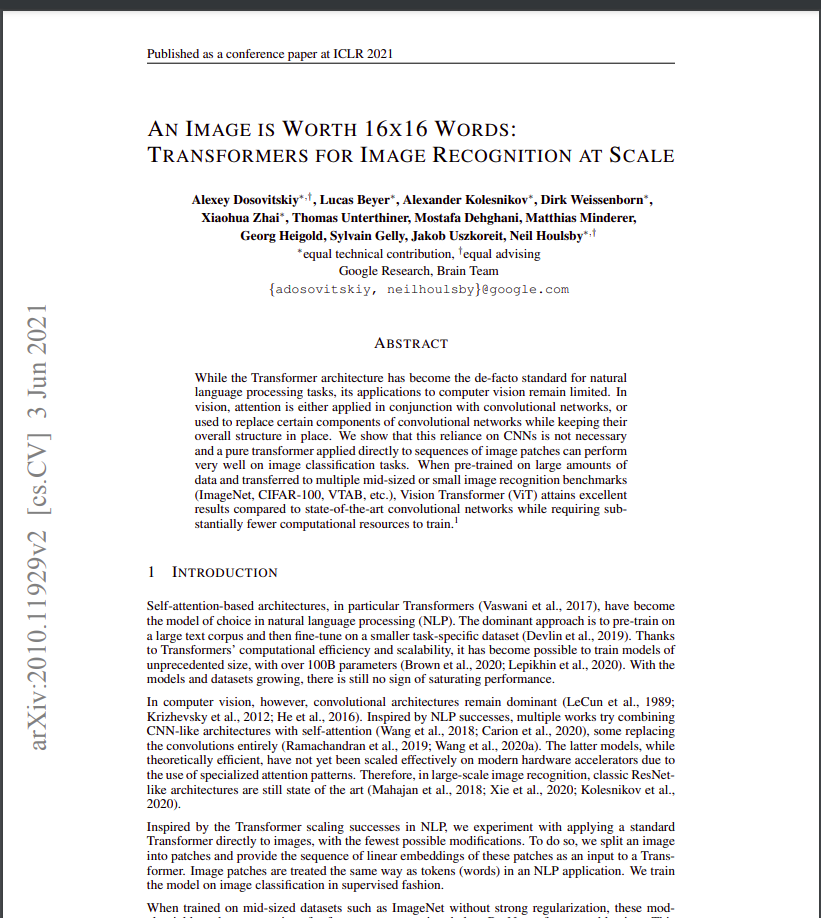
Paper Summary
The paper acknowledges the dominance of convolutional architectures in computer vision despite the success of Transformer architectures in natural language processing. Inspired by transformers’ efficiency and scalability in NLP, the authors applied a standard transformer directly to images with minimal modifications.
They introduce the Vision Transformer (ViT), where images are split into patches, and the sequence of linear embeddings of these patches serves as input to the Transformer. The model is trained on image classification tasks in a supervised manner. Initially, when trained on mid-sized datasets like ImageNet without strong regularization, ViT achieves accuracies slightly below comparable ResNets.
However, the authors reveal that large-scale training is crucial for ViT’s success, surpassing the limitations imposed by the absence of certain inductive biases. When pre-trained on massive datasets, ViT outperforms state-of-the-art convolutional networks on multiple benchmarks, including ImageNet, CIFAR-100, and VTAB. The paper underscores the impact of scaling in achieving remarkable results with Transformer architectures in computer vision.
Key Insights of AI Papers for GenAI Developers
- Transformer in Computer Vision
The paper challenges the prevailing reliance on convolutional neural networks (CNNs) for computer vision tasks. It demonstrates that a pure Transformer, when applied directly to sequences of image patches, can achieve excellent performance in image classification tasks.
- Vision Transformer (ViT)
The authors introduce the Vision Transformer (ViT), a model that utilizes self-attention mechanisms similar to Transformers in NLP. ViT can achieve competitive results on various image recognition benchmarks, including ImageNet, CIFAR-100, and VTAB.
- Pre-training and Transfer Learning
The paper emphasizes the importance of pre-training on large amounts of data, similar to the approach in NLP, and then transferring the learned representations to specific image recognition tasks. ViT, when pre-trained on massive datasets like ImageNet-21k or JFT-300M, outperforms state-of-the-art convolutional networks on various benchmarks.
- Computational EfficiencyViT achieves remarkable results with substantially fewer computational resources during training than state-of-the-art convolutional networks. This efficiency is particularly notable when the model is pre-trained at a large scale.
- Scaling Impact
The paper highlights the significance of scaling in achieving superior performance with Transformer architectures in computer vision. Large-scale training on datasets containing millions to hundreds of millions of images helps ViT overcome the lack of some inductive biases present in CNNs.
Paper 7: AlphaFold2: Highly accurate protein structure with AlphaFold
Link: Read Here
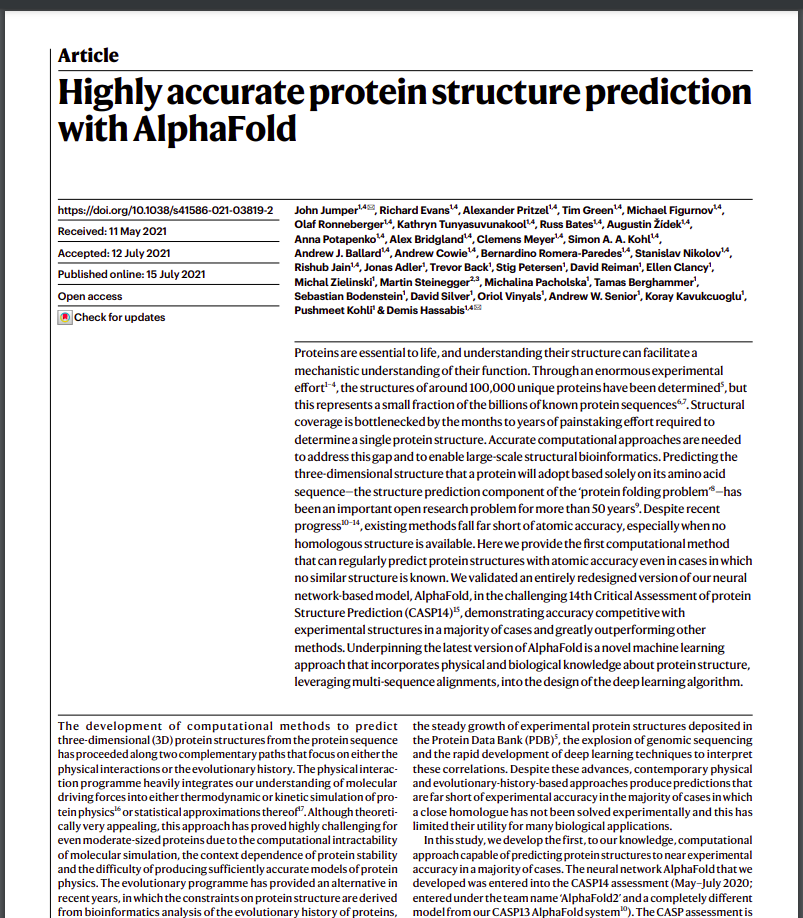
Paper Summary
The paper “AlphaFold2: Highly accurate protein structure with AlphaFold” introduces AlphaFold2, a deep learning model that accurately predicts protein structures. AlphaFold2 leverages a novel attention-based architecture and achieves a breakthrough in protein folding.
Key Insights of AI Papers for GenAI Developers
- AlphaFold2 uses a deep neural network with attention mechanisms to predict the 3D structure of proteins from their amino acid sequences.
- The model was trained on a large dataset of known protein structures and achieved unprecedented accuracy in the 14th Critical Assessment of Protein Structure Prediction (CASP14) protein folding competition.
- AlphaFold2’s accurate predictions can potentially revolutionize drug discovery, protein engineering, and other areas of biochemistry.
Paper 8: GANs: Generative Adversarial Nets
Link: Read Here
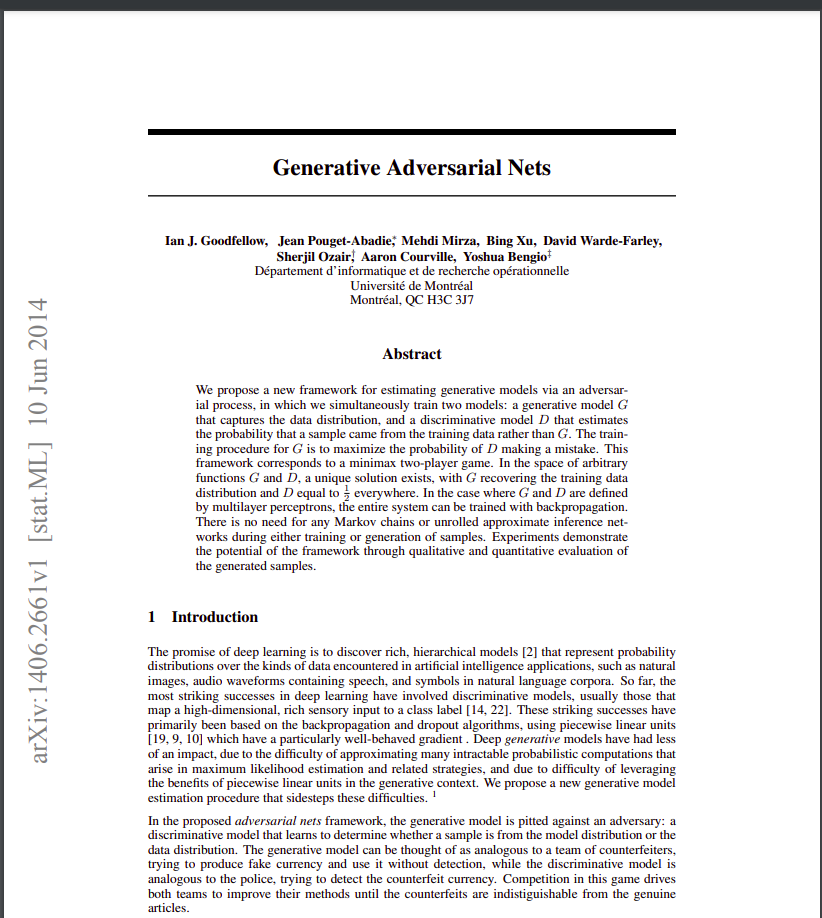
Paper Summary
The paper addresses the challenges in training deep generative models and introduces an innovative approach called adversarial nets. In this framework, generative and discriminative models engage in a game where the generative model aims to produce samples indistinguishable from real data. In contrast, the discriminative model differentiates between real and generated samples. The adversarial training process leads to a unique solution, with the generative model recovering the data distribution.
Key Insights of AI Papers for GenAI Developers
- Adversarial Framework
The authors introduce an adversarial framework where two models are simultaneously trained—a generative model (G) that captures the data distribution and a discriminative model (D) that estimates the probability that a sample came from the training data rather than the generative model.
- Minimax GameThe training procedure involves maximizing the probability of the discriminative model making a mistake. This framework is formulated as a minimax two-player game, where the generative model aims to generate samples indistinguishable from real data, and the discriminative model aims to classify whether a sample is real or generated correctly.
- Unique Solution
A unique solution exists in arbitrary functions for G and D, with G recovering the training data distribution and D being equal to 1/2 everywhere. This equilibrium is reached through the adversarial training process.
- Multilayer Perceptrons (MLPs)The authors demonstrate that the entire system can be trained using backpropagation when multilayer perceptrons represent G and D. This eliminates the need for Markov chains or unrolled approximate inference networks during training and generating samples.
- No Approximate Inference
The proposed framework avoids the difficulties of approximating intractable probabilistic computations in maximum likelihood estimation. It also overcomes challenges in leveraging the benefits of piecewise linear units in the generative context.
Paper 9: RoBERTa: A Robustly Optimized BERT Pretraining Approach
Link: Read Here
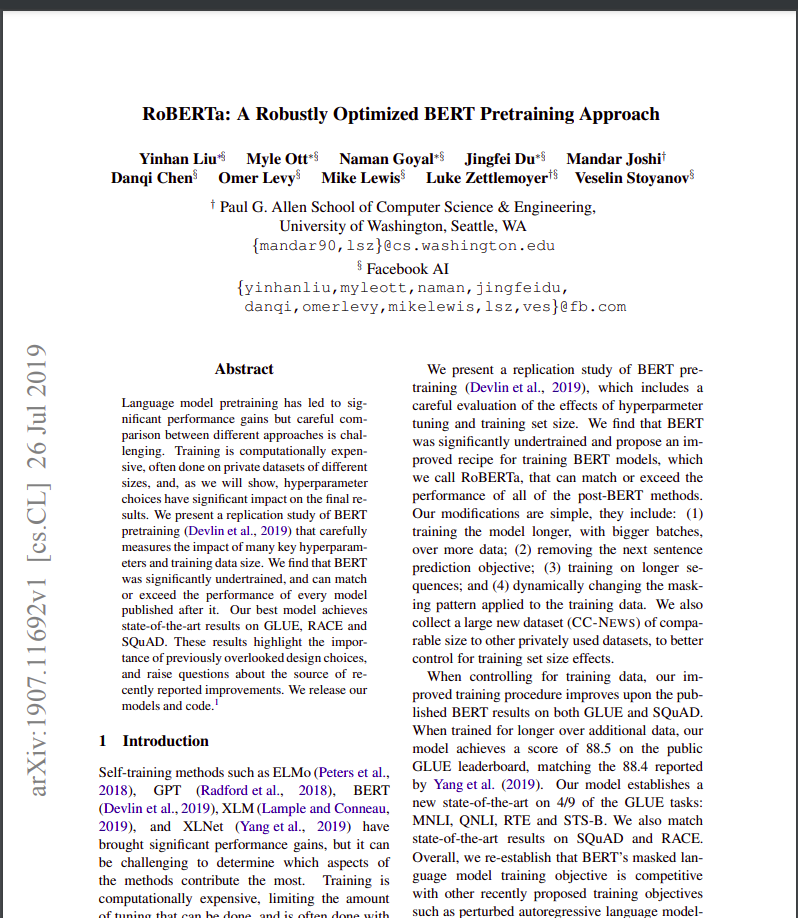
Paper Summary
The paper addresses BERT’s undertraining issue and introduces RoBERTa, an optimized version that surpasses BERT’s performance. The modifications in RoBERTa’s training procedure and using a novel dataset (CC-NEWS) contribute to state-of-the-art results on multiple natural language processing tasks. The findings emphasize the importance of design choices and training strategies in the effectiveness of language model pretraining. The released resources, including the RoBERTa model and code, contribute to the research community.
Key Insights of AI Papers for GenAI Developers
- BERT Undertraining
The authors find that BERT, a widely used language model, was significantly undertrained. By carefully evaluating the impact of hyperparameter tuning and training set size, they show that BERT can be improved to match or exceed the performance of all models published after it.
- Improved Training Recipe (RoBERTa)
The authors introduce modifications to the BERT training procedure, yielding RoBERTa. These changes involve extended training periods with larger batches, elimination of the next sentence prediction objective, training on lengthier sequences, and dynamic masking pattern adjustments for training data.
- Dataset ContributionThe paper introduces a new dataset called CC-NEWS, which is comparable in size to other privately used datasets. Including this dataset helps better control training set size effects and contributes to improved performance on downstream tasks.
- Performance Achievements
RoBERTa, with the suggested modifications, achieves state-of-the-art results on various benchmark tasks, including GLUE, RACE, and SQuAD. It matches or exceeds the performance of all post-BERT methods on tasks such as MNLI, QNLI, RTE, STS-B, SQuAD, and RACE.
- Competitiveness of Masked Language Model Pretraining
The paper reaffirms that the masked language model pretraining objective, with the right design choices, is competitive with other recently proposed training objectives.
- Released Resources
The authors release their RoBERTa model, along with pretraining and fine-tuning code implemented in PyTorch, contributing to the reproducibility and further exploration of their findings.
Also Read: A Gentle Introduction to RoBERTa
Paper 10: NeRF: Representing Scenes as Neural Radiance Fields for View Synthesis
Link: Read Here
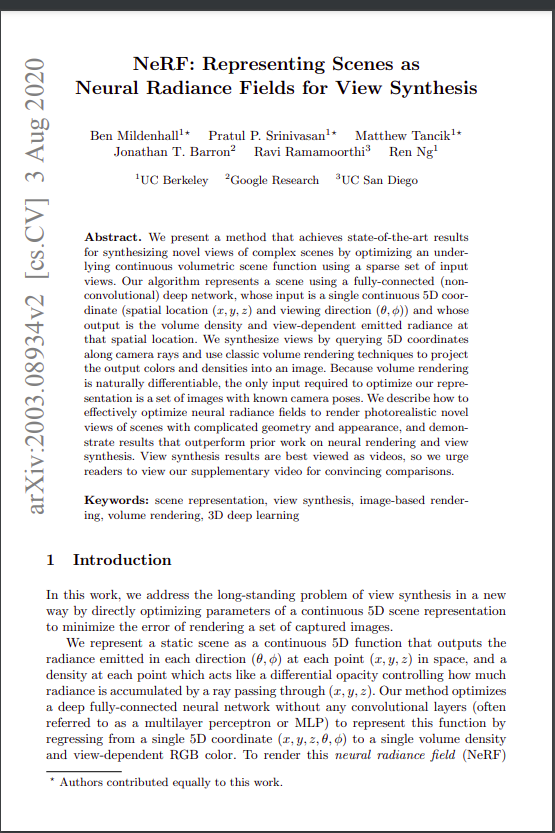
Paper Summary
Optimization involves minimizing the error between observed images with known camera poses and the views rendered from the continuous scene representation. The paper addresses challenges related to convergence and efficiency by introducing positional encoding to handle higher frequency functions and proposing a hierarchical sampling procedure to reduce the number of queries needed for adequate sampling.
Key Insights of AI Papers for GenAI Developers`
- Continuous Scene Representation
The paper presents a method to represent complex scenes as 5D neural radiance fields using basic multilayer perceptron (MLP) networks.
- Differentiable Rendering
The proposed rendering procedure is based on classical volume rendering techniques, allowing for gradient-based optimization using standard RGB images.
- Hierarchical Sampling Strategy
A hierarchical sampling strategy is introduced to optimize MLP capacity towards areas with visible scene content, addressing convergence issues.
- Positional EncodingUsing positional encoding to map input 5D coordinates into a higher-dimensional space enables the successful optimization of neural radiance fields for high-frequency scene content.
The proposed method surpasses state-of-the-art view synthesis approaches, including fitting neural 3D representations and training deep convolutional networks. This paper introduces a continuous neural scene representation for rendering high-resolution photorealistic novel views from RGB images in natural settings, with additional comparisons showcased in the supplementary video to highlight its effectiveness in handling complex scene geometry and appearance.
Paper 11: FunSearch: Mathematical discoveries from program search with large language models
Link: Read Here
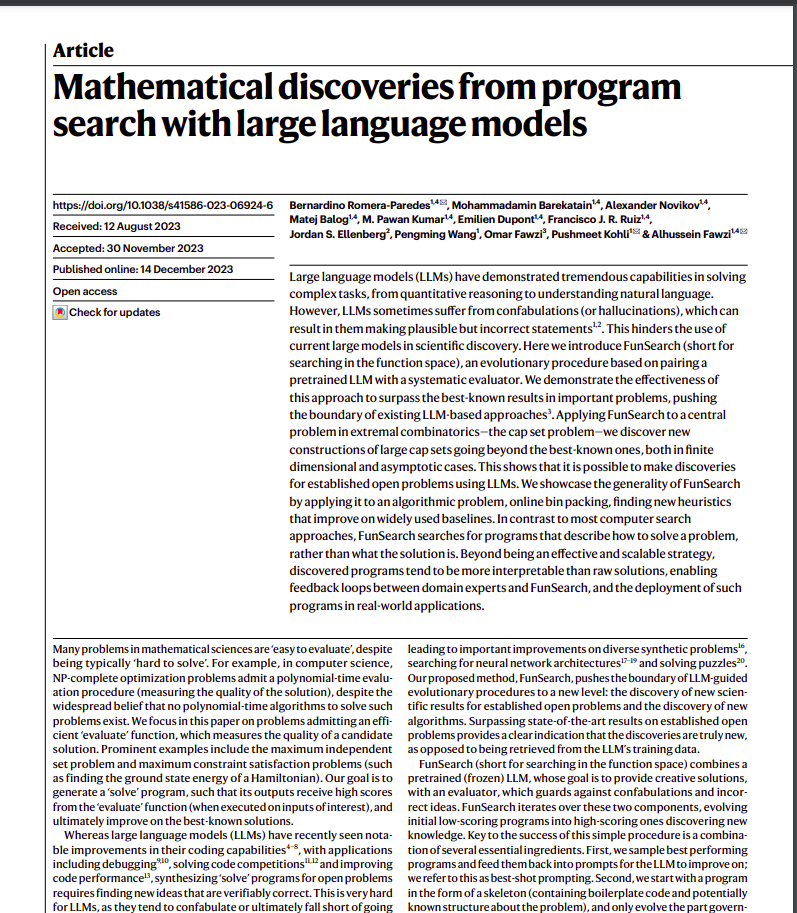
Paper Summary
The paper introduces FunSearch, a novel approach for leveraging Large Language Models (LLMs) to solve complex problems, particularly in scientific discovery. The primary challenge addressed is the occurrence of confabulations (hallucinations) in LLMs, leading to plausible but incorrect statements. FunSearch combines a pretrained LLM with a systematic evaluator in an evolutionary procedure to overcome this limitation.
Key Insights of AI Papers for GenAI Developers
- Problem-Solving with LLMs
The paper addresses the issue of LLMs confabulating or failing to generate novel ideas and correct solutions for complex problems. It emphasizes the importance of finding new, verifiably correct ideas, especially for mathematical and scientific challenges.
- Evolutionary Procedure – FunSearch
FunSearch combines a pretrained LLM with an evaluator in an evolutionary process. It iteratively evolves low-scoring programs into high-scoring ones, ensuring the discovery of new knowledge. The process involves best-shot prompting, evolving program skeletons, maintaining program diversity, and scaling asynchronously.
- Application to Extremal Combinatorics
The paper demonstrates the effectiveness of FunSearch on the cap set problem in extremal combinatorics. FunSearch discovers new constructions of large-cap sets, surpassing the best-known results and providing the largest improvement in 20 years to the asymptotic lower bound.
- Algorithmic Problem – Online Bin Packing
FunSearch is applied to the online bin packing problem, leading to the discovery of new algorithms that outperform traditional ones on well-studied distributions of interest. The potential applications include improving job scheduling algorithms.
- Programs vs. SolutionsFunSearch focuses on generating programs that describe how to solve a problem rather than directly outputting solutions. These programs tend to be more interpretable, facilitating interactions with domain experts and are easier to deploy than other types of descriptions, such as neural networks.
- Interdisciplinary Impact
FunSearch’s methodology allows for exploring a wide range of problems, making it a versatile approach with interdisciplinary applications. The paper highlights its potential for making verifiable scientific discoveries using LLMs.
Paper 12: VAEs: Auto-Encoding Variational Bayes
Link: Read Here
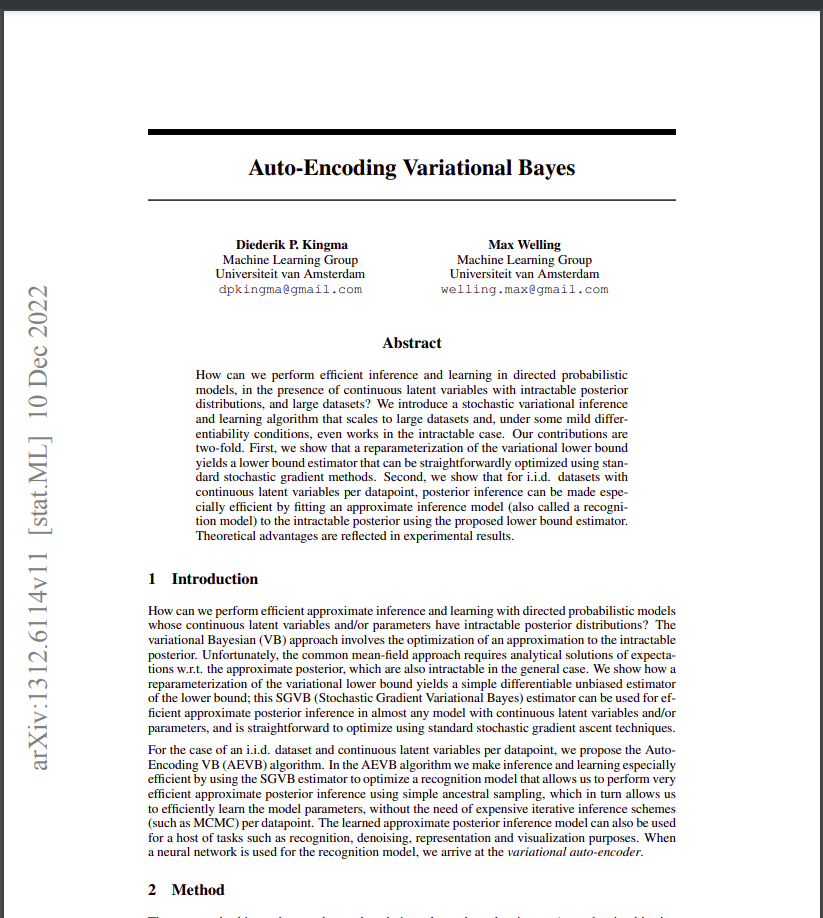
Paper Summary
The “Auto-Encoding Variational Bayes” paper addresses the challenge of efficient inference and learning in directed probabilistic models with continuous latent variables, particularly when the posterior distributions are intractable and are dealing with large datasets. The authors propose a stochastic variational inference and learning algorithm that scales well for large datasets and remains applicable even in intractable posterior distributions.
Key Insights of AI Papers for GenAI Developers
- Reparameterization of Variational Lower Bound
The paper demonstrates a reparameterization of the variational lower bound, resulting in a lower bound estimator. This estimator is amenable to optimization using standard stochastic gradient methods, making it computationally efficient.
- Efficient Posterior Inference for Continuous Latent VariablesThe authors propose the Auto-Encoding VB (AEVB) algorithm for datasets with continuous latent variables per data point. This algorithm utilizes the Stochastic Gradient Variational Bayes (SGVB) estimator to optimize a recognition model, enabling efficient approximate posterior inference through ancestral sampling. This approach avoids expensive iterative inference schemes like Markov Chain Monte Carlo (MCMC) for each data point.
- Theoretical Advantages and Experimental Results
The theoretical advantages of the proposed method are reflected in the experimental results. The paper suggests that the reparameterization and recognition model leads to computational efficiency and scalability, making the approach applicable to large datasets and in situations where the posterior is intractable.
Also read: Unveiling the Essence of Stochastic in Machine Learning
Paper 13: LONG SHORT-TERM MEMORY
Link: Read Here
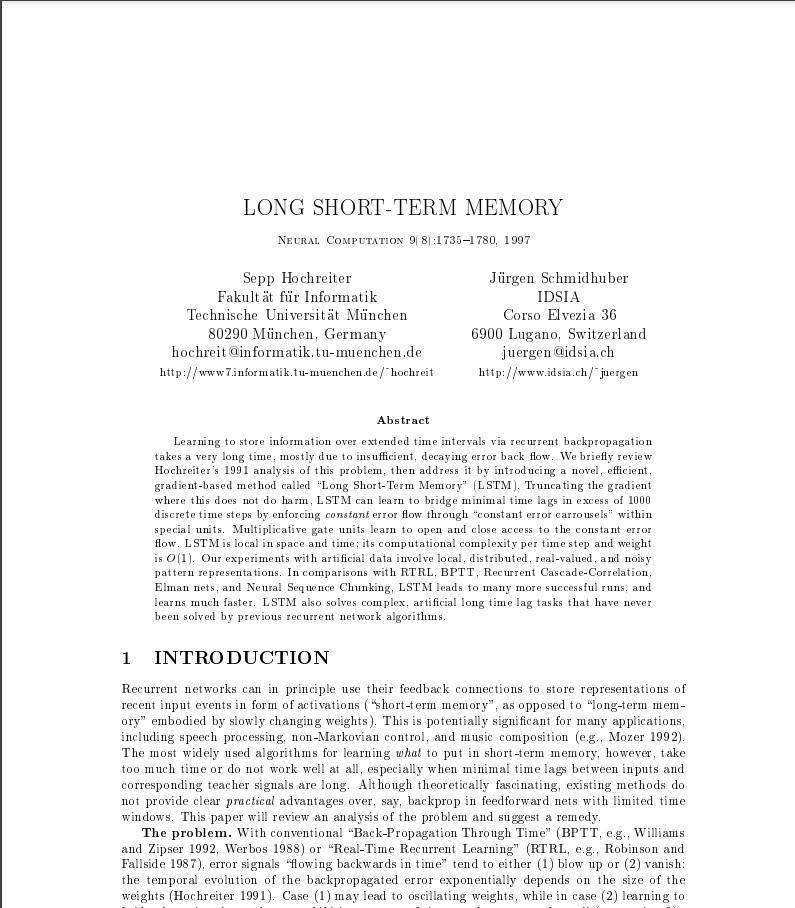
Paper Summary
The paper addresses the challenge of learning to store information over extended time intervals in recurrent neural networks. It introduces a novel, efficient gradient-based method called “Long Short-Term Memory” (LSTM), overcoming insufficient and decaying error backflow issues. LSTM enforces constant error flow through “constant error carousels” and uses multiplicative gate units to control access. With local space-time complexity (O(1) per time step and weight), experimental results show that LSTM outperforms existing algorithms regarding learning speed and success rates, especially for tasks with prolonged time lags.
Key Insights of AI Papers for GenAI Developers
- Problem Analysis
The paper provides a detailed analysis of the challenges associated with error backflow in recurrent neural networks, highlighting the issues of error signals either exploding or vanishing over time.
- Introduction of LSTM
The authors introduce LSTM as a novel architecture designed to address the problems of vanishing and exploding error signals. LSTM incorporates constant error flow through specialized units and employs multiplicative gate units to regulate access to this error flow.
- Experimental Results
Through experiments with artificial data, the paper demonstrates that LSTM outperforms other recurrent network algorithms, including BPTT, RTRL, Recurrent cascade correlation, Elman nets, and Neural Sequence Chunking. LSTM shows faster learning and higher success rates, particularly in solving complex tasks with long time lags.
- Local in Space and Time
LSTM is described as a local architecture in space and time, with computational complexity per time step and weight being O(1).
- Applicability
The proposed LSTM architecture effectively solves complex, artificial long-time lag tasks not successfully addressed by previous recurrent network algorithms.
- Limitations and Advantages
The paper discusses the limitations and advantages of LSTM, providing insights into the practical applicability of the proposed architecture.
Also read: What is LSTM? Introduction to Long Short-Term Memory
Paper 14: Learning Transferable Visual Models From Natural Language Supervision
Link: Read Here
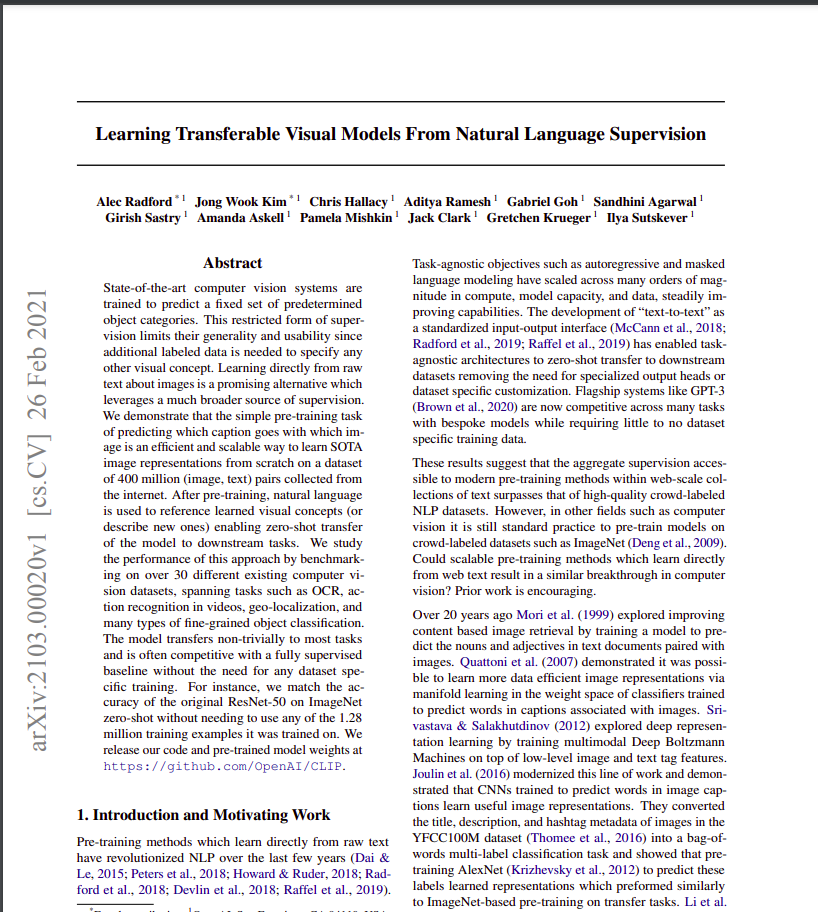
Paper Summary
The paper explores training state-of-the-art computer vision systems by directly learning from raw text about images rather than relying on fixed sets of predetermined object categories. The authors propose a pre-training task of predicting which caption corresponds to a given image, using a dataset of 400 million (image, text) pairs collected from the internet. The resulting model, CLIP (Contrastive Language-Image Pre-training), demonstrates efficient and scalable learning of image representations. After pre-training, natural language references visual concepts, enabling zero-shot transfer to various downstream tasks. CLIP is benchmarked on over 30 computer vision datasets, showcasing competitive performance without task-specific training.
Key Insights of AI Papers for GenAI Developers
- Training on Natural Language for Computer Vision
The paper explores using natural language supervision to train computer vision models instead of the traditional training approach on crowd-labelled datasets like ImageNet.
- Pre-training TaskThe authors propose a simple pre-training task: predicting which caption corresponds to a given image. This task is used to learn state-of-the-art image representations from scratch on a massive dataset of 400 million (image, text) pairs collected online.
- Zero-Shot Transfer
After pre-training, the model utilizes natural language to reference learned visual concepts or describe new ones. This enables zero-shot transfer of the model to downstream tasks without requiring specific dataset training.
- Benchmarking on Various Tasks
The paper evaluates the performance of the proposed approach on over 30 different computer vision datasets, covering tasks such as OCR, action recognition in videos, geo-localization, and fine-grained object classification.
- Competitive Performance
The model demonstrates competitive performance with fully supervised baselines on various tasks, often matching or surpassing the accuracy of models trained on task-specific datasets without additional dataset-specific training.
- Scalability Study
The authors study the scalability of their approach by training a series of eight models with different levels of computational resources. The transfer performance is found to be a smoothly predictable function of computing.
- Model Robustness
The paper highlights that zero-shot CLIP models are more robust than equivalent accuracy supervised ImageNet models, suggesting that zero-shot evaluation of task-agnostic models provides a more representative measure of a model’s capability.
Paper 15: LORA: LOW-RANK ADAPTATION OF LARGE LANGUAGE MODELS
Link: Read Here
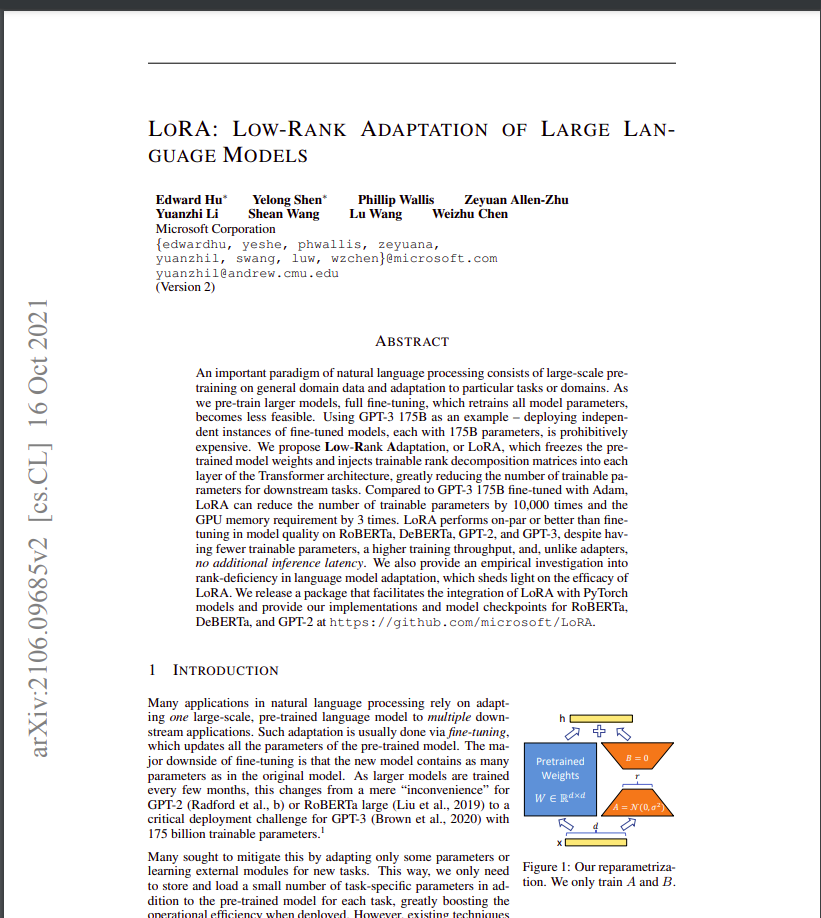
Paper Summary
The paper proposes LoRA as an efficient method for adapting large pre-trained language models to specific tasks, addressing deployment challenges associated with their increasing size. The method substantially reduces trainable parameters and GPU memory requirements while maintaining or improving model quality across various benchmarks. The open-source implementation further facilitates the adoption of LoRA in practical applications.
Key Insights of AI Papers for GenAI Developers
1. Problem Statement
- Large-scale pretraining followed by fine-tuning is a common approach in natural language processing.
- Fine-tuning becomes less feasible as models grow larger, particularly when deploying models with massive parameters, such as GPT-3 (175 billion parameters).
2. Proposed Solution: Low-Rank Adaptation (LoRA)
- The paper introduces LoRA, a method that freezes pretrained model weights and introduces trainable rank decomposition matrices into each layer of the Transformer architecture.
- LoRA significantly reduces the number of trainable parameters for downstream tasks compared to full fine-tuning.
3. Benefits of LoRA
- Parameter Reduction: Compared to fine-tuning, LoRA can reduce the number of trainable parameters by up to 10,000 times, making it computationally more efficient.
- Memory Efficiency: LoRA decreases GPU memory requirements by up to 3 times compared to fine-tuning.
- Model Quality: Despite having fewer trainable parameters, LoRA performs on par or better than fine-tuning in terms of model quality on various models, including RoBERTa, DeBERTa, GPT-2, and GPT-3.
4. Overcoming Deployment Challenges
- The paper addresses the challenge of deploying models with many parameters by introducing LoRA, allowing for efficient task switching without retraining the entire model.
5. Efficiency and Low Inference Latency
- LoRA facilitates sharing a pre-trained model for building multiple LoRA modules for different tasks, reducing storage requirements and task-switching overhead.
- Training is made more efficient, lowering the hardware barrier to entry by up to 3 times when using adaptive optimizers.
6. Compatibility and Integration
- LoRA is compatible with various prior methods and can be combined with them, such as prefix-tuning.
- The proposed linear design allows merging trainable matrices with frozen weights during deployment, introducing no additional inference latency compared to fully fine-tuned models.
7. Empirical Investigation
- The paper includes an empirical investigation into rank deficiency in language model adaptation, providing insights into the efficacy of the LoRA approach.
8. Open-Source Implementation
- The authors provide a package that facilitates the integration of LoRA with PyTorch models and release implementations and model checkpoints for RoBERTa, DeBERTa, and GPT-2.
YOu can also read: Parameter-Efficient Fine-Tuning of Large Language Models with LoRA and QLoRA
Conclusion
In conclusion, delving into the 15 essential AI Papers for GenAI developers highlighted in this article is not merely a recommendation but a strategic imperative for any aspiring developer. These AI papers offer a comprehensive journey through the diverse landscape of artificial intelligence, spanning critical domains such as natural language processing, computer vision, and beyond. By immersing oneself in the insights and innovations presented within these papers, developers gain a profound understanding of the field’s cutting-edge techniques and algorithms.
Related
- SEO Powered Content & PR Distribution. Get Amplified Today.
- PlatoData.Network Vertical Generative Ai. Empower Yourself. Access Here.
- PlatoAiStream. Web3 Intelligence. Knowledge Amplified. Access Here.
- PlatoESG. Carbon, CleanTech, Energy, Environment, Solar, Waste Management. Access Here.
- PlatoHealth. Biotech and Clinical Trials Intelligence. Access Here.
- Source: https://www.analyticsvidhya.com/blog/2024/01/essential-ai-papers-every-gen-ai-developer-must-read/
- :has
- :is
- :not
- :where
- $UP
- 000
- 1
- 10
- 11
- 12
- 13
- 14
- 14th
- 15%
- 17
- 20
- 20 years
- 2014
- 2017
- 28
- 30
- 3d
- 400
- 41
- 60
- 7
- 8
- 9
- 913
- a
- ability
- About
- AC
- access
- accuracy
- accurate
- accurately
- Achieve
- achieved
- Achieves
- achieving
- across
- Action
- adaptability
- adaptation
- adapting
- adaptive
- Additional
- Additionally
- address
- addressed
- addresses
- addressing
- adjustments
- Adoption
- advancements
- ADvantage
- advantages
- adversarial
- After
- ahead
- AI
- aims
- AL
- algorithm
- algorithms
- All
- allow
- Allowing
- allows
- along
- also
- amounts
- an
- analysis
- and
- any
- applicable
- Application
- applications
- applied
- applies
- Apply
- Applying
- approach
- approaches
- approximate
- architecture
- ARE
- areas
- argue
- arise
- article
- articles
- artificial
- artificial intelligence
- Artificial intelligence (AI)
- AS
- aspiring
- assessment
- associated
- At
- attend
- attention
- authors
- barrier
- based
- basic
- BE
- becomes
- being
- below
- Benchmark
- benchmarked
- benchmarks
- benefits
- BEST
- Better
- between
- Beyond
- biases
- Billion
- BIN
- boost
- both
- bound
- breakthrough
- breakthroughs
- broader
- Building
- built
- but
- by
- called
- came
- camera
- CAN
- candidates
- cap
- capabilities
- capability
- Capacity
- capture
- captures
- carefully
- cascade
- categories
- certain
- chain
- chains
- challenge
- challenges
- challenging
- chances
- Changes
- choices
- classes
- classification
- Classify
- CNN
- code
- collected
- combined
- combines
- Common
- community
- comparable
- compared
- comparisons
- compatible
- competent
- competition
- Competitions
- competitive
- competitiveness
- completely
- complex
- complexity
- comprehensive
- computation
- computational
- computations
- computer
- Computer Vision
- computing
- concepts
- Concerns
- conclusion
- Connect
- connected
- Consider
- considerably
- considered
- consists
- constant
- content
- contest
- context
- continues
- continuous
- contrast
- contribute
- contributes
- contributing
- contributions
- control
- Convergence
- convolutional neural network
- correct
- correctly
- Correlation
- corresponds
- costly
- cover
- covering
- critical
- crucial
- Current
- curve
- cutting-edge
- data
- datasets
- Days
- dealing
- decisions
- decreases
- deep
- deep learning
- deep neural network
- deeper
- demands
- demonstrate
- demonstrates
- demonstrating
- depend
- dependencies
- deploy
- deploying
- deployment
- describe
- described
- describes
- Design
- designed
- Despite
- detailed
- Developer
- developers
- developing
- different
- difficult
- difficulties
- directed
- directly
- Discovers
- discovery
- discusses
- distance
- distinguish
- distinguishes
- distribution
- distributions
- diverse
- Diversity
- do
- domain
- domains
- Dominance
- drug
- drug discovery
- during
- dynamic
- E&T
- each
- easier
- Effective
- effectively
- effectiveness
- effects
- efficacy
- efficiency
- efficient
- eight
- either
- elements
- eleven
- eliminates
- eliminating
- emphasize
- emphasizes
- employers
- employs
- enable
- enables
- enabling
- encoding
- engage
- Engineering
- English
- enhance
- enhancements
- Enhances
- ensuring
- Entire
- entirely
- entry
- equal
- Equilibrium
- Equivalent
- error
- especially
- essence
- essential
- established
- establishes
- estimates
- Ether (ETH)
- evaluating
- evaluation
- Even
- everywhere
- evolve
- evolves
- evolving
- examples
- exceed
- exceeds
- excellent
- exciting
- exhibits
- existing
- exists
- Expand
- expensive
- experimental
- experiments
- experts
- exploration
- explore
- explores
- Exploring
- extended
- facilitates
- facilitating
- failing
- familiar
- faster
- feasible
- Features
- few
- fewer
- field
- Fields
- filters
- final
- Find
- finding
- findings
- First
- firstly
- fitting
- five
- fixed
- flow
- focuses
- focusing
- followed
- For
- found
- four
- Framework
- Frequency
- from
- frozen
- full
- fully
- function
- functions
- further
- Gain
- Gains
- game
- GANs
- gate
- genai
- generate
- generated
- generating
- generative
- generative model
- gentle
- geometry
- given
- Giving
- Global
- GPU
- GPUs
- graph
- graph neural networks
- graphs
- Grow
- handle
- Handling
- Hardware
- having
- helps
- High
- High-Frequency
- high-resolution
- higher
- Highlight
- Highlighted
- highlighting
- highlights
- highly
- How
- How To
- HTTPS
- human
- Humans
- Hundreds
- hundreds of millions
- Hyperparameter Tuning
- ideas
- identify
- image
- Image classification
- Image Recognition
- ImageNet
- images
- Impact
- Impacts
- imperative
- implementation
- implementations
- implemented
- implications
- importance
- important
- imposed
- improved
- improvement
- improvements
- improves
- improving
- in
- include
- includes
- Including
- incorporate
- incorporates
- Increase
- increased
- increasing
- increasingly
- indicating
- information
- informed
- initially
- innovations
- innovative
- input
- insights
- inspired
- instance
- instead
- instructions
- insufficient
- integration
- Intelligence
- intense
- interaction
- interactions
- interest
- Internet
- into
- introduce
- introduced
- Introduces
- introducing
- Introduction
- investigation
- involve
- involves
- issue
- issues
- IT
- ITS
- Job
- Jobs
- journey
- jpg
- knowledge
- known
- Lack
- landing
- landscape
- language
- large
- large-scale
- larger
- largest
- Latency
- latest
- layer
- layers
- leading
- Leads
- LEARN
- learned
- learning
- less
- levels
- Leverage
- leverages
- leveraging
- like
- likelihood
- limitation
- limitations
- Limited
- local
- Long
- long time
- Look
- Low
- lower
- lowering
- machine
- machine translation
- made
- maintaining
- major
- make
- Making
- manner
- many
- map
- Margin
- massive
- Match
- matches
- matching
- mathematical
- Matrix
- max-width
- maximizing
- maximum
- measure
- mechanisms
- Memory
- merely
- merging
- method
- methodologies
- Methodology
- methods
- million
- millions
- minimal
- minimizing
- mistake
- model
- models
- Modifications
- Modules
- more
- more efficient
- Moreover
- most
- multiple
- must
- Must Read
- narrow
- Natural
- Natural Language
- Natural Language Processing
- Nature
- Need
- needed
- needs
- Nerf
- Nets
- network
- networks
- Neural
- neural network
- neural networks
- NeurIPS
- Neurons
- New
- news
- next
- nlp
- no
- node
- nodes
- notable
- note
- Notes
- novel
- number
- object
- objective
- objectives
- observed
- occurrence
- OCR
- of
- offer
- Offers
- often
- on
- ONE
- ones
- online
- only
- open source
- operation
- Operations
- optimization
- Optimize
- optimized
- or
- Other
- Outperform
- outperforming
- Outperforms
- output
- outside
- over
- Overcome
- overcoming
- overview
- package
- pairs
- pankaj
- Paper
- papers
- Parallel
- parameter
- parameters
- particular
- particularly
- Patches
- Pattern
- per
- perform
- performance
- performs
- periods
- Photorealistic
- plato
- Plato Data Intelligence
- PlatoData
- plausible
- Point
- pose
- poses
- potential
- potentially
- powerful
- Practical
- Practical Applications
- predict
- Predictable
- predicting
- prediction
- Predictions
- Predicts
- present
- presented
- presents
- prevailing
- previous
- primary
- Prior
- probability
- Problem
- problems
- procedure
- process
- processing
- produce
- profound
- Program
- Programs
- projects
- propose
- proposed
- proposes
- proposing
- Protein
- Proteins
- proven
- proves
- provide
- provides
- providing
- published
- pytorch
- quality
- queries
- Race
- range
- rank
- Rates
- rather
- Raw
- reached
- Read
- Reading
- reaffirms
- real
- real world
- recent
- recently
- recipe
- recognition
- Recommendation
- recovering
- recurrence
- recurrent
- Recursive
- reduce
- Reduced
- reduces
- reducing
- reduction
- reference
- references
- reflected
- regarding
- Regulate
- related
- Relationships
- release
- released
- reliance
- relying
- remains
- remarkable
- rendered
- rendering
- represent
- representation
- representative
- representing
- require
- requirement
- Requirements
- research
- Research Community
- researchers
- Resources
- resulting
- Results
- retraining
- reveal
- revolutionize
- RGB
- right
- Risk
- robust
- Scalability
- scalable
- Scale
- scales
- scaling
- scenarios
- scene
- scenes
- scheduling
- schemes
- scientific
- score
- scratch
- Search
- sentence
- Sequence
- Series
- serves
- set
- Sets
- settings
- several
- Share
- sharing
- short-term
- show
- showcased
- showcasing
- showing
- Shows
- signals
- significance
- significant
- significantly
- similar
- similarities
- Simple
- simultaneously
- situations
- Size
- skilled
- smoothly
- societal
- solely
- solution
- Solutions
- SOLVE
- Solves
- Solving
- some
- sometimes
- Space
- Space and Time
- spanning
- specialized
- specific
- Spectral
- speed
- split
- standard
- state-of-the-art
- statements
- stay
- Step
- storage
- store
- Strategic
- strategies
- Strategy
- strong
- structure
- structured
- structures
- Struggles
- Study
- substantial
- substantially
- success
- successful
- Successfully
- such
- suffer
- Suggests
- suitable
- superior
- supervision
- surpasses
- surpassing
- SVG
- synthesis
- system
- Systems
- Task
- tasks
- techniques
- terms
- test
- text
- than
- that
- The
- The Graph
- their
- Them
- then
- theoretical
- These
- they
- this
- thousands
- three
- Through
- time
- times
- to
- tool
- Topics
- towards
- traditional
- Train
- trained
- Training
- transfer
- transferable
- Transferring
- transformer
- transformers
- Translation
- Translation Quality
- Trends
- tuning
- tutorial
- two
- types
- underscores
- understanding
- unique
- units
- unlike
- unprecedented
- updated
- Updates
- use
- used
- uses
- using
- utilizes
- v1
- Valuable
- variables
- various
- verifiable
- versatile
- versatility
- version
- Video
- Videos
- View
- views
- visible
- vision
- vision systems
- visual
- Visual recognition
- volume
- vs
- was
- ways
- web
- weight
- WELL
- when
- whether
- which
- while
- wide
- Wide range
- widely
- wider
- Wider Community
- Wikipedia
- will
- with
- within
- without
- words
- Work
- works
- worth
- written
- years
- yielding
- you
- Your
- zephyrnet




